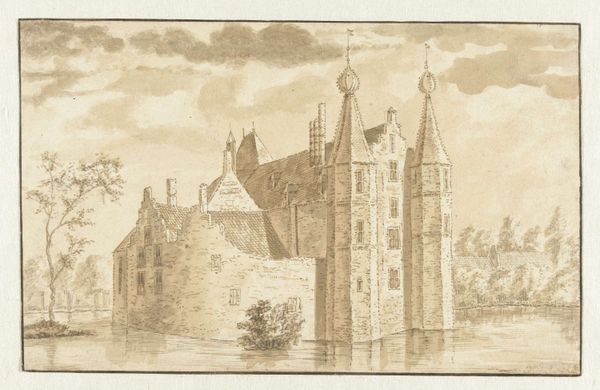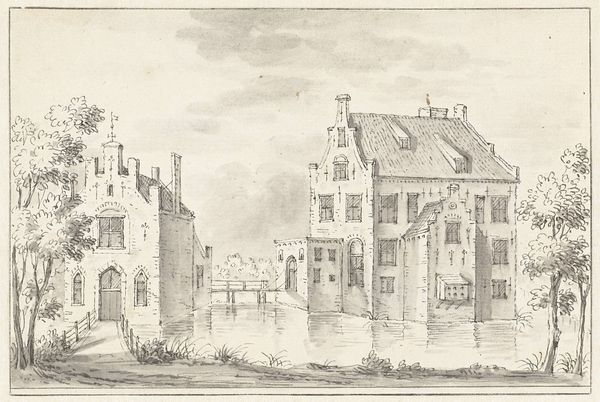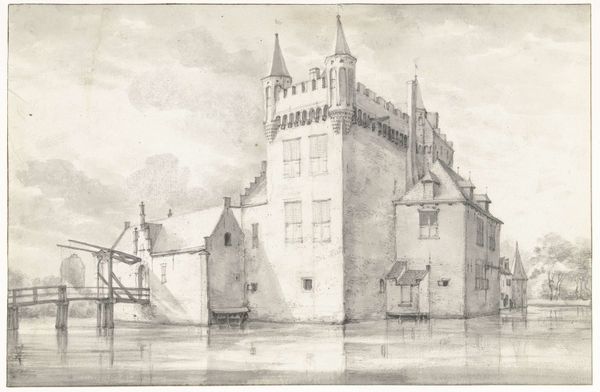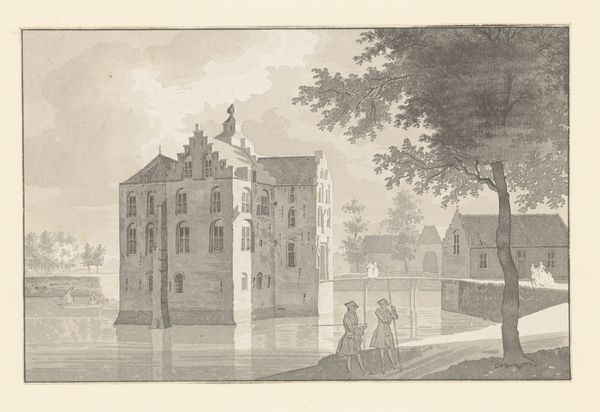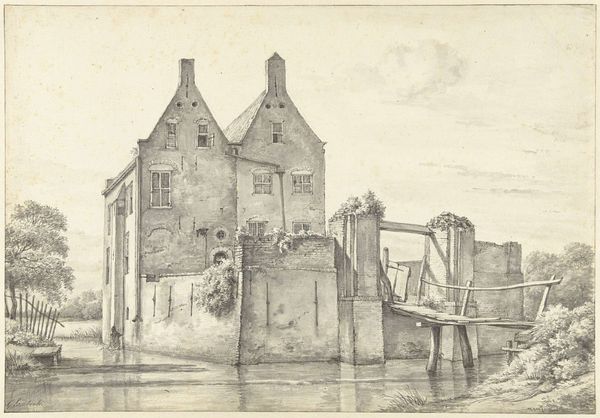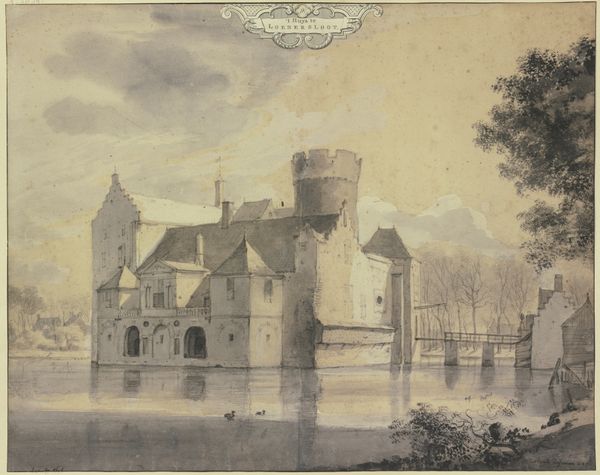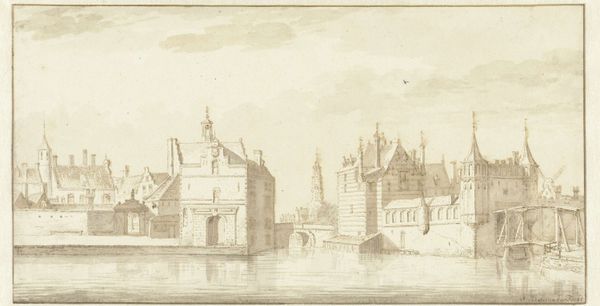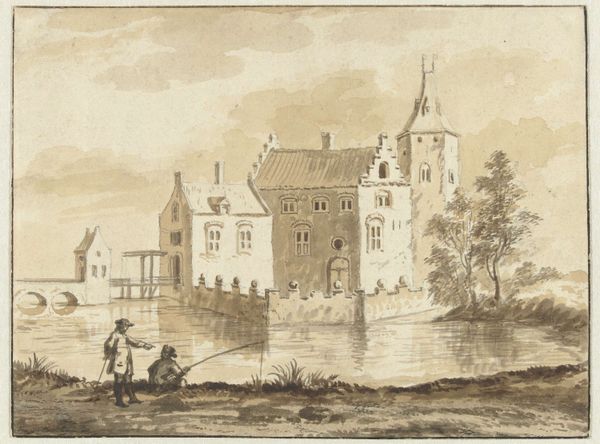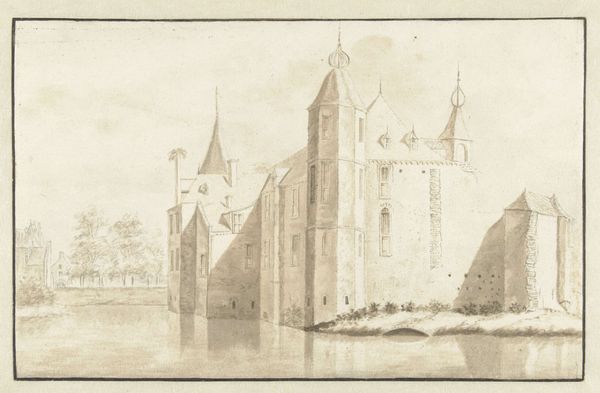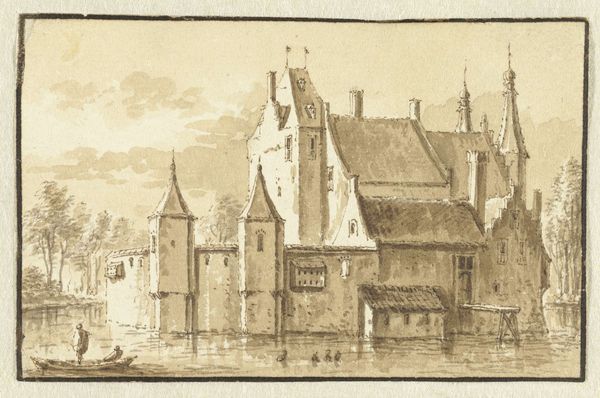
drawing, watercolor, pen
#
drawing
#
baroque
#
dutch-golden-age
#
pencil sketch
#
landscape
#
watercolor
#
pen
#
cityscape
#
watercolor
Dimensions: height 397 mm, width 520 mm
Copyright: Rijks Museum: Open Domain
Curator: This drawing, created around 1646 by Roelant Roghman, depicts Kasteel Santhorst, viewed from the northwest. Roghman captured the castle using pen, watercolor, and pencil. The grayscale immediately gives me a melancholic first impression. Editor: I agree, the subdued palette definitely lends itself to a contemplative mood. It reminds me of a fading photograph, a memory of a place and time. Considering Roghman's place within the Dutch Golden Age, we might examine the cultural anxieties embedded in portraying landscapes and stately homes this way. What stories about power, ownership, and societal change does it tell? Curator: Good point! This wasn't simply about capturing the architectural form. Look at how Roghman frames the castle—partially obscured, surrounded by water, almost fortress-like. It seems to acknowledge the social tensions around wealth and privilege during a time of immense economic and political upheaval. Editor: Precisely! The play of light and shadow on the facade, and the reflections on the water’s surface aren't simply representational techniques. The semiotics behind Dutch landscape painting also signified the prevailing moral and cultural narratives. Notice also, Roghman’s technique makes use of long fluid lines that enhance a calm tonality despite it’s somewhat severe form. Curator: Absolutely, Roghman's attention to the liminal spaces suggests themes such as status, separation, and introspection that transcend just an aesthetic architectural portrayal. Considering what you highlighted about water and moral narratives, maybe it symbolizes the cleansing and transformation of society. Editor: Interesting! That approach aligns well with feminist theories, highlighting the historical tendency to regard women’s work (watercolor, landscape paintings, etc.) as lesser than male artistic productions (large portraits and sculptures). These delicate, intimate studies offer subversive narratives. What seems subtle, perhaps, bears important critical perspectives. Curator: Ultimately, this seemingly simple image engages with complex themes that continue to echo through history. Editor: Exactly. By engaging with this artwork, we also get a peek into how past Dutch landscape artists used art as an indirect form of criticism.
Comments
No comments
Be the first to comment and join the conversation on the ultimate creative platform.
